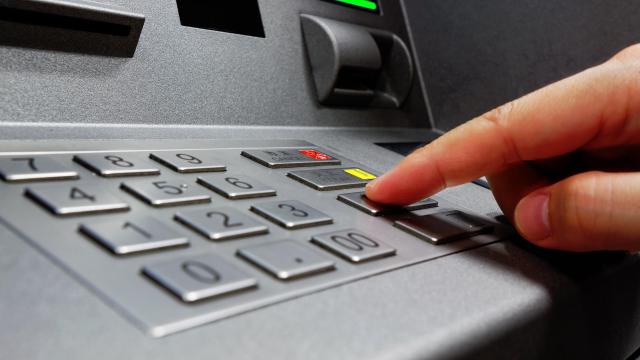It would appear that the days of crisp dollar bills and shiny pennies are falling behind us. The number of ATMs in the U.S. is reportedly on the decline as we move to a society hellbent on credit cards, mobile payments, and tap-to-pay.
A new report from The Wall Street Journal, which cites data from the research firm Euromonitor International, indicates that the presence of ATMs peaked in 2019 at 470,000 machines across the country — a figure that has now been reduced to 451,500 units at the end of 2022. The drop in ATMs is likely a vestige of covid-19 shaping our society, where, during the height of the pandemic, customers moved to digital payments and credit cards only to never return back to cash.
“There was that scare that the virus was transmitted by paper, plus the trend of just buying everything online,” said Kendrick Sands, a Chicago-based Euromonitor International research manager, to the Journal. “That dealt almost a death blow to cash, especially for younger people.”
There have been a number of fronts in the financial push to digital — all of which have encouraged people away from cash and most of which were born out of the covid-19 pandemic. Contactless credit cards have gotten noticeably popular in recent years, allowing credit card payments to move away from chips and swipes, and towards simple taps which take less time, require less touching, and are reportedly more secure for customers. Contactless payments are so en vogue that even ATMs themselves have touch points to access your account via your card or phone.
Apps like Venmo, Splitwise, and PayPal, similarly, do not require a physical transfer of funds — resulting in less germ transfer and fewer ATM trips. Venmo (which is owned by PayPal) reportedly has 90 million U.S.-based accounts and grew 50% in Q2 2022, according to a product report from the company. While Venmo has been commonplace for consumers, it is now becoming even more commonplace with businesses as a point-of-sale system or as an official form of payment. It’s also increasingly common among workers (hair stylists, massage therapists, etc) who use money transfer apps for tips.
A secondary threat to cash payments was the seemingly never-ending coin shortage, which plagued the country shortly after the onset of the covid-19 pandemic. The U.S. Federal Reserve System says that the country has an adequate amount of coins in circulation, but that rate of circulation was disrupted by the pandemic as businesses and banks closed and people stayed home more than usual. According to the Federal Reserve System’s website:
As a first step, a temporary cap was imposed in June 2020 on the orders depository institutions place for coins with the Federal Reserve to ensure that the supply was fairly distributed. Because coin circulation patterns have not fully returned to pre-pandemic levels, caps were reinstated in May 2021.
The banking industry says that digital payments don’t tell the full story of the increasing disappearance of the country’s ATMs. The ATM Industry Associations’s executive director David Tente told The Wall Street Journal that ATM crime has been playing a huge role in the reduction in ATMs. Tente also reportedly pushed back on the declining figures presented by Euromonitor International, claiming that cash was still important for purchases, albeit in a reduced capacity.
“[Cash] is still the payment method of choice for in-person transactions of $US25 ($35) or less,” Tente told the Journal. He added: “Right now the biggest threat to the industry is not electronic payments, but ATM crime.”
